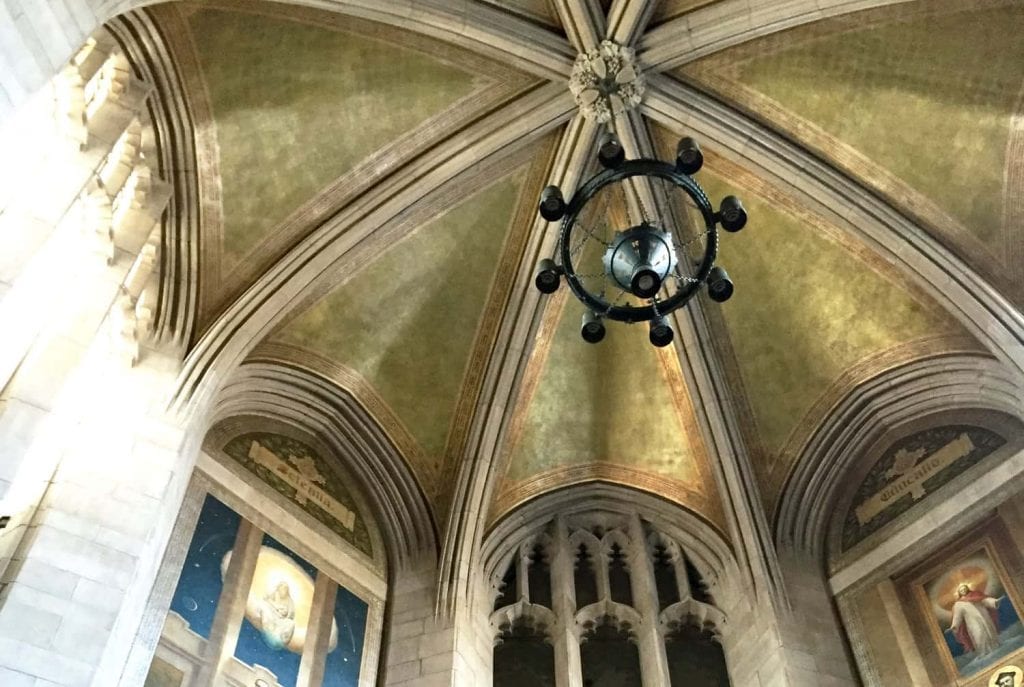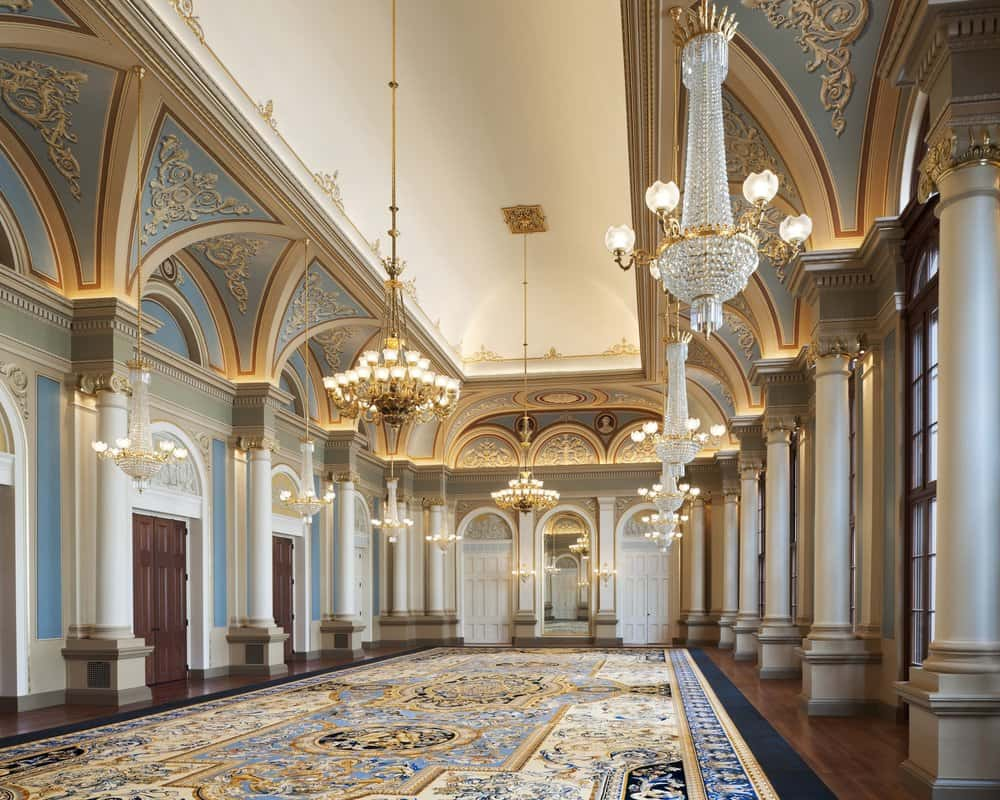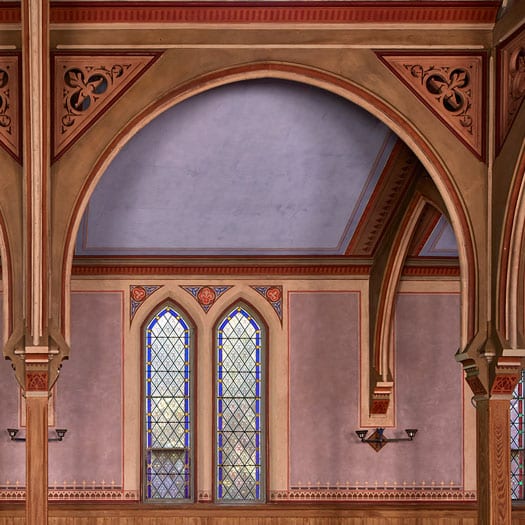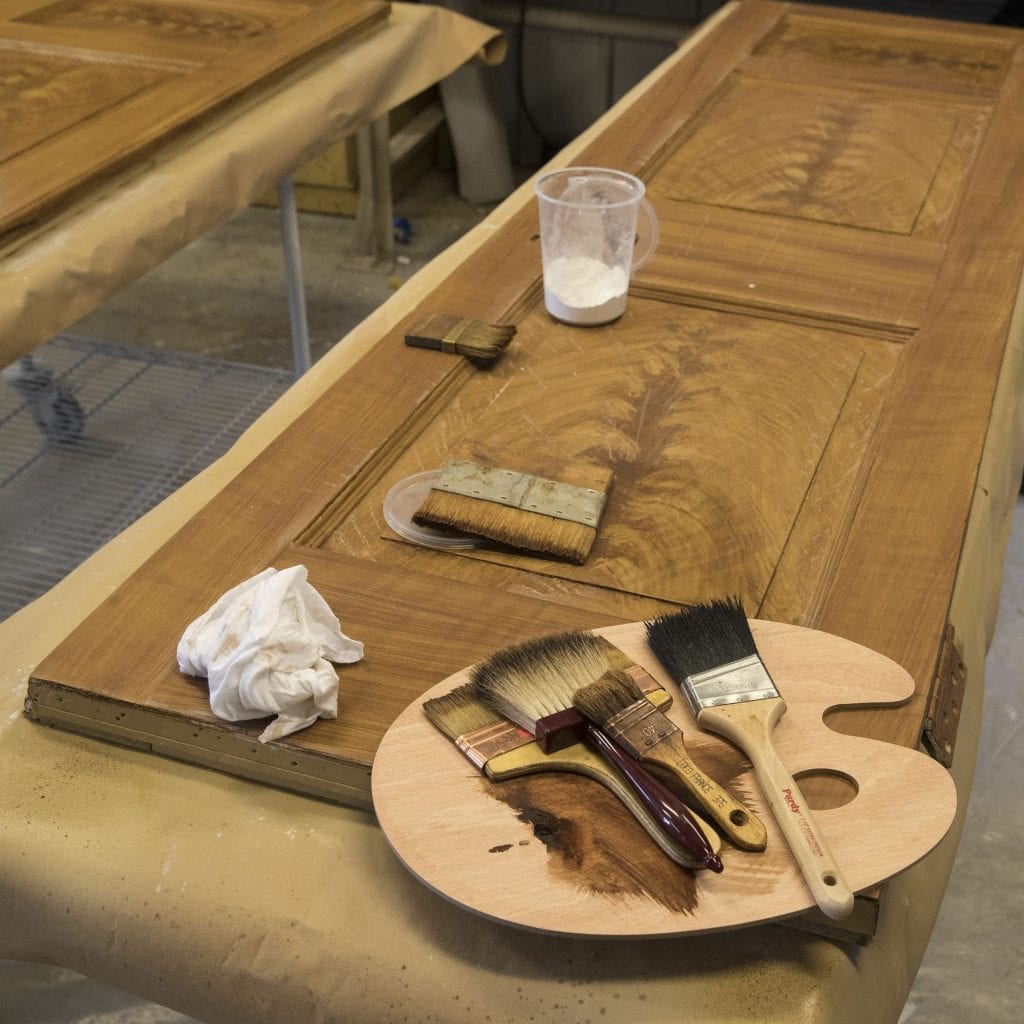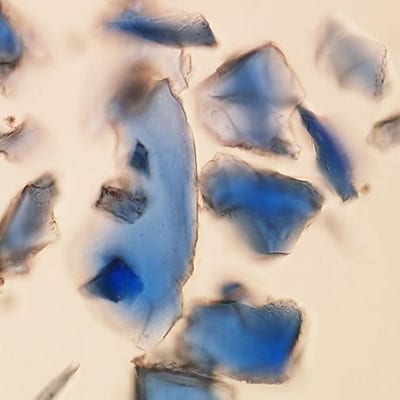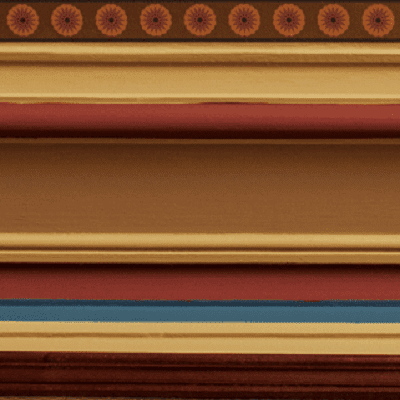Paint has been utilized as a decorative and pictorial tool throughout architecture from the very start of civilization. Even before civilizations were formed, cave paintings show an ancient love for art in one’s dwelling. As society and architecture progressed, painting styles have altered to fit the era’s ideologies and appreciations. While there have been many types of historic paint implemented in architecture, there are some general groupings which are important to know. Having an understanding of the types of paint used by ancient artists up through paint compositions recently developed will help cultivate an appreciation for the technique of making paint and the architectural decoration thereof. Here is an overview of the different types of historic paint.
General Overview
Milk-Based Paint and Natural Binders
From the start of painting to the medieval period, naturally derived binders and mediums were combined with earth toned pigments to create an applicable mixture for decoration. Some early paintings have been able to stand the test of time due to their location or durable composition while many ancient works of art have been corroded by both natural and human wear over the centuries. Paintings have become more durable with the introduction of the fresco, giving historians and analysts the ability to learn from the ancient techniques.
Spirit Varnish
Composed of resin, a dissolver, and oil, spirit varnishes have been used since the early Egyptians as a protective coat as well as a tool for creating luster on a surface. Varnish has been experimented with overtime, yielding different types of finish and stand-alone paints.
Oil-Based Paint
Towards the beginning of the 15th century, oil based paints, especially linseed oil were developed as both a protective varnish and decorative tool. Slow to dry and more durable than its predecessor, oil paints have been continually used throughout architectural decoration.
Synthetic Paint
Artificially made and pre-mixed, much of modern paint is comprised of factory-produced binders such as acrylic paint. Many binders used now are plastic and make a more durable mixture than the naturally composed paints.
Pre-Civilization
The very first signs of painting come from caves throughout Europe where mud was mixed with earth derived pigments like brown and red to create a rudimentary mixture. The subject of the paintings were various animals of prey and the cataloging of the natural environment. These paintings are estimated to be around 30,000 – 40,000 years old. You can see the first utilization of a brush around this time, hinting at early stages of decorative innovation.
Egyptian
Paint does not re-appear for another 30,000 years until ancient Egyptian art dated around 4,000 BC is discovered. The earliest Egyptian painting techniques suggest a great deal of modernization of design methods since the early cave paintings. There had been an introduction of pigment binders by this period which has made the paint more durable once applied to a surface. Natural materials such as sap and milk were used as a binding medium for the paint mixture. The earliest form of a formal paint mixture called distemper was introduced at this time. Comprised of natural binders, water, color pigment, and chalk, distemper provides a more suitable paint than the previous mixtures although it is still feeble and temporary compared to its modern relatives. The Egyptians also introduced varnishes which were used as a protective sealer. These paints were of a glossy appearance and were made of sap and resin.
Classical Greek
Painting techniques stayed relatively sound until a new method called fresco was introduced by the Greeks 2,000 years following the Egyptians. Fresco is a painting technique where water-based paints are applied onto wet plaster. The drying plaster traps the pigment within its surface, thus preserving the paint better than previous techniques. The water in the paint is mixed with lime before coming into contact with the pigment. This helps with binding and therefore the paints durability. The plaster itself was not combined with lime until much later, when it was introduced in the early Renaissance. Encaustic painting methods were introduced in the last few centuries BC and involved the melting of wax to use as a binder for the pigments.
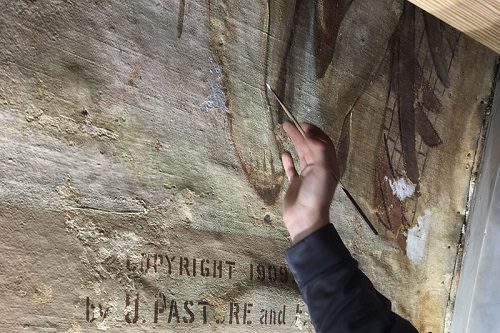
Infilling and Restoration of a Historic Fresco
Roman and Medieval
By the 2nd century, artists were experimenting with oil-based paints. Natural oils from vegetation were utilized in Roman decoration whereas the more popular linseed oil was introduced 4 centuries later, towards the start of the medieval period. Oil-based paints were originally used as an innovation of the original varnish introduced by the ancient Egyptians. Their original intended purpose was to work as a sealer and to provide luster to an already painted surface. However, as the paint began to be used more frequently, it became a ground-breaking tool for decorative painting.
Renaissance
At the start of the 15th century, oil-based paints were still being used as a protective varnish in northern Europe. When Italy discovered the use of linseed oil in paintings, the sealer quickly turned into a featured element throughout renaissance architecture. Large painting projects became more manageable due to the slower drying composition of linseed oil which gave rise to more in-process deliberation and detail in the application of frescos throughout religious, civil, and domestic decoration.
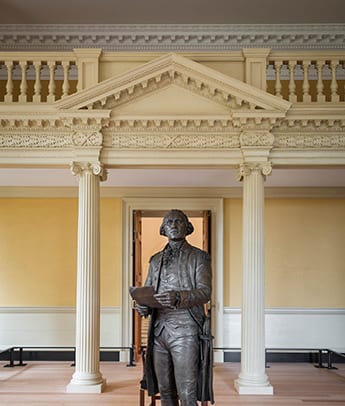
Maryland Old State House Senate Chambers restoration required the use of old fashion distemper and linseed oil paints.
American Modernization
From the 18th century throughout modern paints, synthetic binding substitutes have been utilized for a number of reasons. The durability of synthetic paints such as acrylics facilitates architectural decoration. A wide range of artificial hues have expanded the painter’s palette, allowing for a more specific and detailed design for every project. Even linseed oil has been substituted for more modern mediums such as tung and mineral oil.
In Summary
Paint compositions and the application methods for architectural decoration have developed over thousands of years. The modernization of techniques for mixing pigments with binders, combined with the innovation of mediums, has made paint more durable while allowing artists more experimentation with their designs. In understanding the history of paint, conservators, owners, and artisans alike can appreciate and utilize this decorative history to influence their future artistry.




